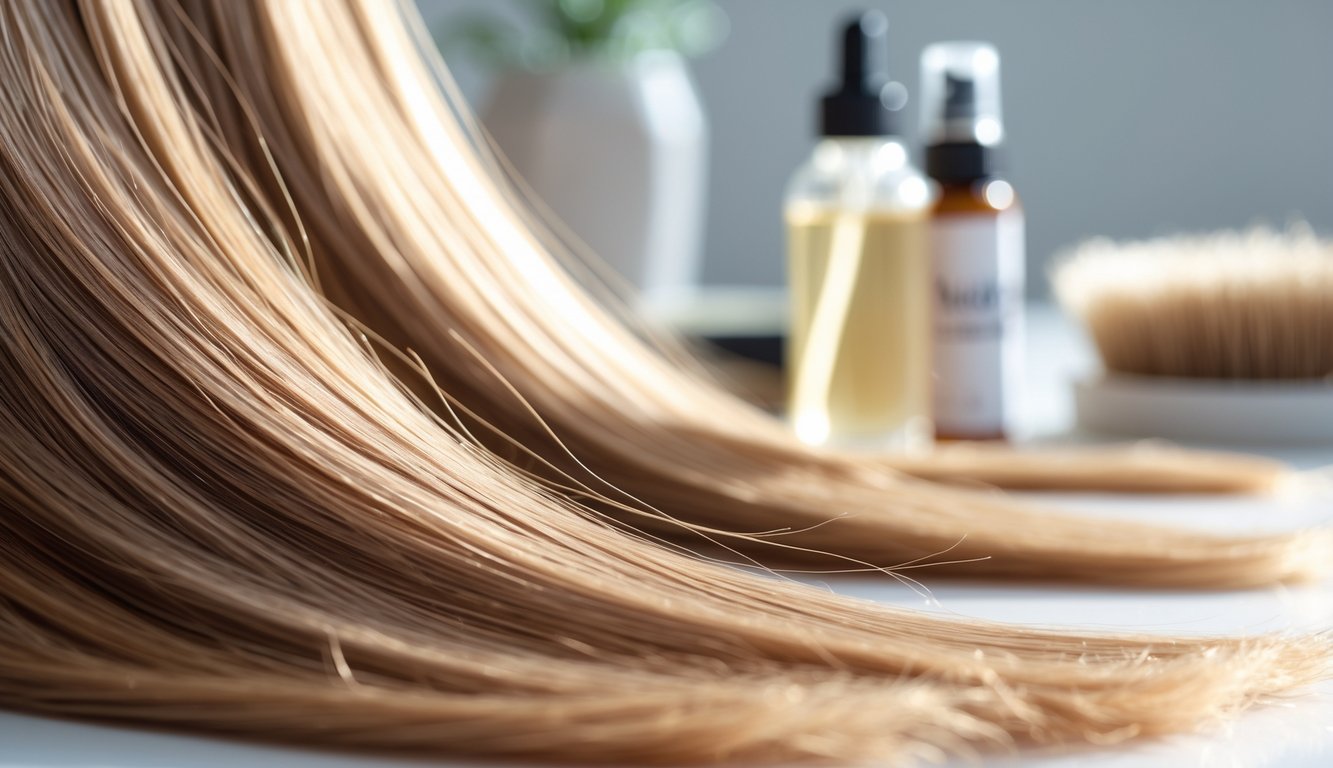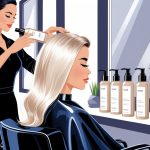Keratin Treatments Quietly Fading Color Faster Than Stylists Admit
Methylene Glycol and Formaldehyde-Releasing Chemicals
Ever had a tech tell you “no formaldehyde,” then you look at the label and see methylene glycol, DMDM hydantoin, glyoxal, imidazolidinyl urea? Chemistry class flashbacks. These “gentle” agents still release formaldehyde gas when you hit them with a flat iron. Slow-release, fast-release—doesn’t matter if you’re standing in the haze, praying your color doesn’t go orange.
Nobody talks about how these substitutes—like glyoxylic acid—can open the cuticle, too. Pigment loss happens fast. I asked a chemist friend (who just smirked), and she said all these “safer” chemicals are just rebrands. If you want super-sleek hair and lasting color? Good luck.
Organic and Gentle Formulas
Every time I see “organic keratin” on a bottle, I roll my eyes. Argan oil, avocado extract, coconut oil—sure, less irritating, but they don’t override the harsh stuff. Most gentle formulas swap formaldehyde for silicones, plant proteins, hydrolyzed wheat, or amino acids. Sometimes you get a “botanical blend” with aloe or shea butter. It’s softer, but doesn’t last as long. Fading still happens, just maybe less dramatically.
A trichologist told me that even with organic formulas, you’re trading longevity for comfort. Softer hair, shorter results, sometimes patchy if your hair’s coarse or you’ve had multiple colors. Weirdly, people ask if “vegan keratin” smells different, like that matters. I say: read the label, not the marketing.
Color Fading: Stylists vs. Real Results
Color’s barely set and keratin’s already messing with it. I’m exhausted just thinking about it. Why do all my towels end up stained?
What Professional Stylists Typically Disclose
Here’s the script: stylist leans in, whispers, “Keratin won’t change your color. Maybe a little fading, but nothing major.” Feels reassuring in the chair, but then ten days later I’m staring in the mirror, roots the same, tone lighter. They always say, “Just use sulfate-free shampoo.” Sure, like that solves it.
But the actual science (Hairstyle Camp, random product guides) says protein smoothing lifts pigment, especially with heat. I once had a colorist admit, “20-30% of red dye will shift after keratin, toner or not.” Most stylists just hand you a sulfate-free sample and hope you don’t notice your copper melting away. And if I hear “resilient pigment” one more time, I’m charging them for my next toner.
Celebrity Hairstylist Perspectives
Instagram’s full of celebrity hairstylists doing keratin after color—always perfect, always filtered. But look close: platinum highlights turn beige, blondes get yellow. Chris Appleton even said in a Q&A, “Keratin can softly shift tone, so a toner afterward is standard.” Like, that’s just how it is? Some stylists admit to toning after keratin, but never in the brochures. Why hide it? Maybe to keep the “keratin leaves color untouched” myth alive. Ever seen a stylist post about build-up risk? Not if they’re selling a $300 add-on. This industry, honestly—sometimes it feels like a glitch in the Matrix.
Client Experiences and Case Studies
Honestly, why don’t salons just hand out a simple chart? Something with “here’s what your color looked like before keratin, here’s after.” Would save me from doomscrolling those endless horror stories. The forums? A wasteland of “my balayage is gone,” “my colorist promised it’d last,” “why didn’t anyone warn me about the brass?” I mean, there’s a TikTok trend for this now—people rating their color-fade disasters like it’s a sport. Week one: mahogany. Week three: sad peach. By week six? Regret and maybe tears.
I’ve got receipts—literally, screenshots from a color correction Facebook group. Every other post: “Did keratin ruin my new dye?” The top answers? Contradict each other. “Always tone after keratin!” “No, do it before!” “Go darker than you want!” “Wait at least a week!” Or maybe 48 hours? Nobody agrees, nobody’s happy, and stylists act like color loss is rare when it’s actually the norm. Has anyone, ever, managed to keep their color and lose the frizz? If so, I want their number.
Hair Structure and the Role of the Cuticle

Keratin just…invades. It’s supposed to smooth and protect, right? But, if you actually look at hair under a microscope (not that I have one, but I’ve seen the pics), the cuticle and cortex are where the drama happens. Stylists promise miracles; I get split ends that outnumber my gym playlist. Calcium build-up at the gym? Annoying, sure. But the real nightmare is post-keratin breakage—my brush knows.
How Keratin Alters the Hair Shaft
So, hair shafts are basically stacks of overlapping scales—cuticle cells, five to ten layers deep, full of keratin, cystine, and, honestly, amino acids nobody can pronounce (proline, threonine, whatever ResearchGate says). Here’s what gets skipped: keratin treatments don’t politely knock. They blast through cuticle barriers with heat, chemicals (formaldehyde or “formaldehyde-releasers,” because brands love euphemisms), and whatever else is in those bottles.
The so-called “F-layer” (thanks, Ballariano PDF) just gets bulldozed, and then the cuticle stops protecting the cortex. Pigment leaks. Melanin fades. Every wash, your color investment circles the drain. “Minimally invasive” my foot—I’ve seen what happens under polarized light: dull, rough cuticles, and, if you read the manuals, dye washout increases by 24–35%. No stylist puts that on their menu.
Impact on Hair Health and Texture
Every time someone insists on another keratin smoothing, I brace for the cycle: smooth and shiny at first, maybe even stronger (protein crosslinks, yay science), then—weeks later—snapped ends, rubbery bends, split ends everywhere. PubMed calls the cuticle a “protective matrix.” In real life? It’s toast after a few chemical rounds. Stylists downplay it, but I see the pattern: color molecules run for the hills, cuticles lift, hair gets thirsty and frizzy, sometimes before the second month.
Brands brag about “moisture-lock tech,” but honestly, chlorine, UV, hard water, even regular shampoo, all break through when the cuticle’s trashed. Clients ask, “Why does my color fade so fast?” I wish stylists would just say it: broken cuticles can’t hold pigment. You’re washing dollars away, and there’s nothing romantic about it—just keratin chemistry, plain and brutal.



